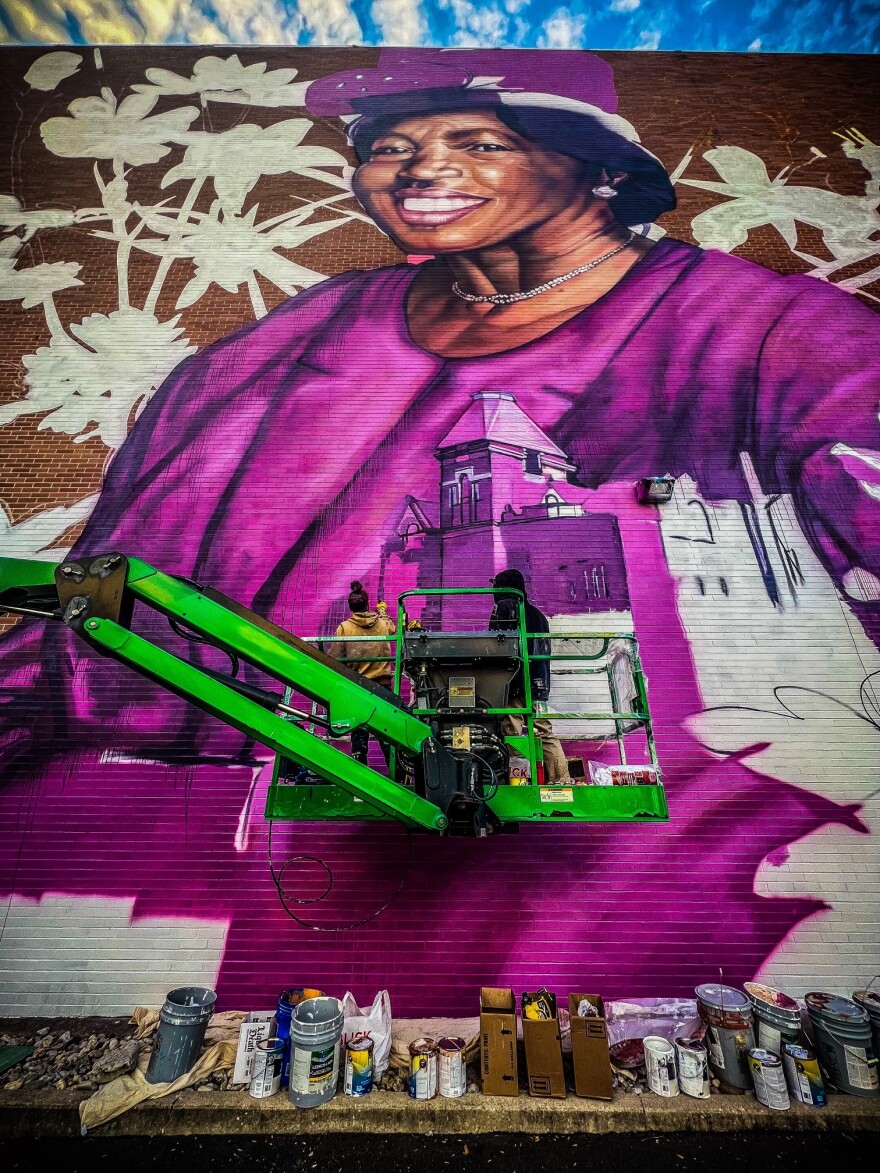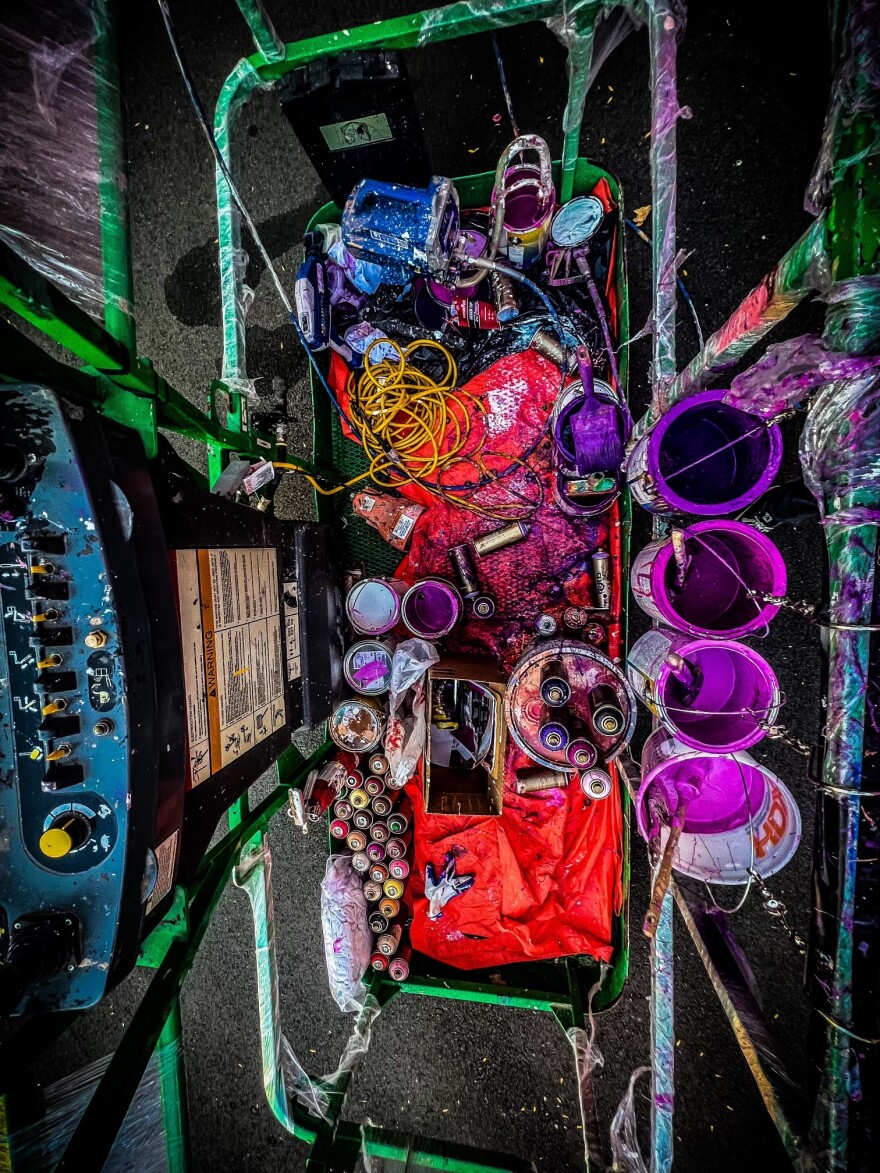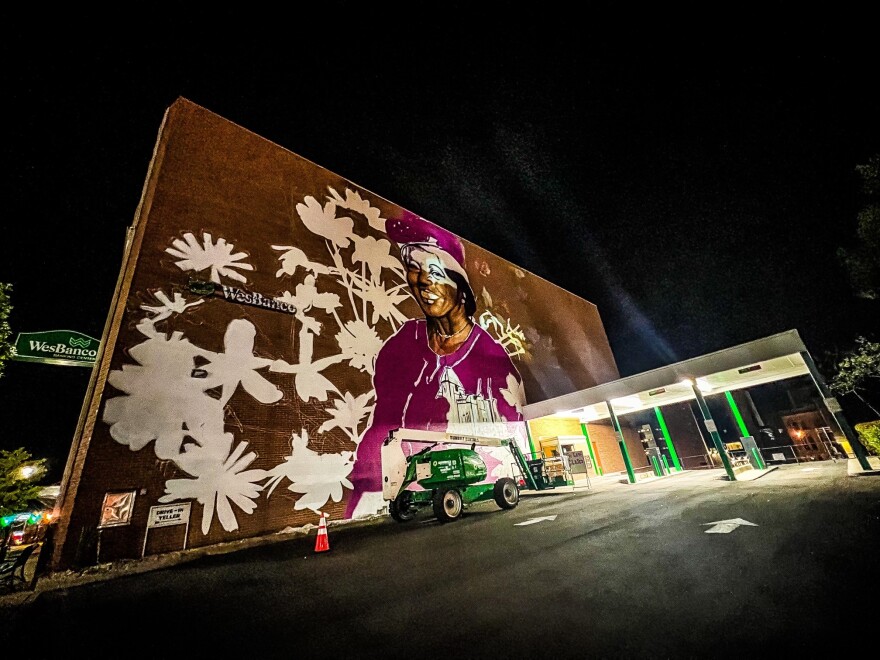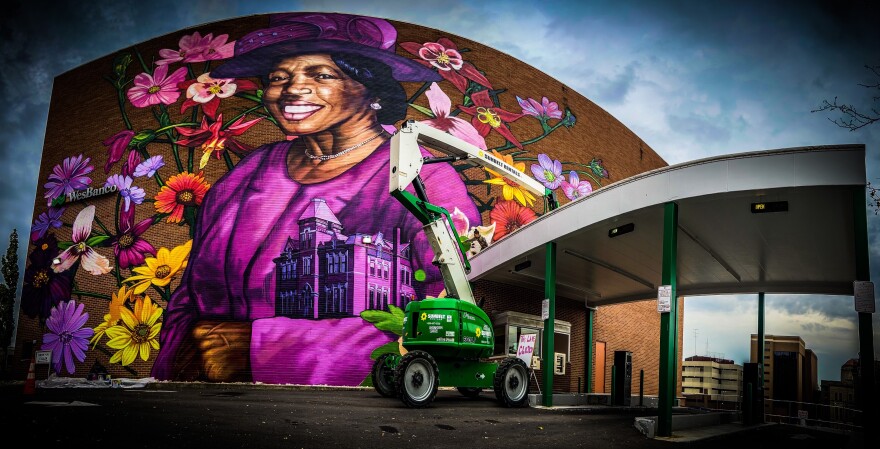Those who gathered October 11 to celebrate a 40-foot mural of Springfield Civil Rights activist Hattie Moseley were like the mural itself: fresh, vibrant, of many colors and bathed in sunlight.
Tom Stafford: A William Miller didn’t need to be told. He knew that Hattie Moseley had protested against the segregation of Springfield’s Fulton Elementary School in the early 1920s. He called her —
William Miller: Legendary in the African-American community. Having Hattie Moseley represent a part of the history of Springfield speaks very, very well of the city.
Stafford: But to Ruth Lawson, also African-American, Moseley’s story was a revelation.

Ruth Lawson: I never really knew much about the Black community in Springfield. To see someone like Hattie Moseley as early as the twenties stepping out and taking a big risk, I think that's that's marvelous. And really kind of encourages me to go to the library or go to that website and look up the history.
Stafford: Moseley’s relatives were giddy over the resurrection of her role in public protests of 1922 and [1923].
Shirley Harris: She was our auntie.
Stafford: That’s Moseley’s great-niece, Shirley Harris. Krystal Stanford, a great-great niece was thrilled with the size of the crowd at the dedication.
Krystal Stanford: I didn’t know it was going to get this big. I didn’t see this happening.
Stafford: Harris and her sister, Diantha Applin, were in their mid-teens when Moseley died in 1965. And though Moseley never talked with them about the boycott, the family remembers her as someone with the strength to stand up.
Diantha Applin and Shirley Harris: She was a businesswoman. Very firm, very firm. Very firm.

Stafford: Internationally known artist Gaia asked Harris to be a body model for Moseley. She then chose a dress and hat with a bold hue to represent their auntie’s character: the color purple. All contributed to a portrait great-great niece Stanford said represents —
Krystal: Progress in Springfield. Coming together and making progress.
Stafford: That’s what Marta Wojcik, director of the Frank Lloyd Wright Westcott House, and other members of the Springfield Public Art Committee intended.
Marta Wojcik: We are truly wanting to continue ways to bring back the stories of underrepresented groups in our community. It's a big deal to us. And artists tell stories that otherwise wouldn’t be told.
Stafford: Wocjik’s husband, Turner Foundation historian Kevin Rose, told the gathering Moseley’s parents were likely born in slavery and her father died in a Jim Crow era prison after years of hard labor. Moseley later joined the throng of black people heading north for greater freedom and opportunity. But Rose says she arrived in Springfield the year after the Ohio National Guard was called to quell anti-black rioting.

Kevin Rose: Right after the riot, the school board, which had a superintendent and two board members that were members of the Klan — decided to segregate Fulton School. And we know from oral testimony she was one of the main instigators on the picket line. But more than that was working to register specifically black women — who had just gained the right to vote.
Stafford: Long-time Springfield salon owner Patty Young says Moseley was still involved in the larger struggle in the 1950s and ‘60s.
Patty Young: She used to come in my mother's beauty salon. She would be talking about what's going on in the city and women voting. And, it was just, everybody was quiet to listen to what Miss Hattie had to say.
Stafford: Along with sister Debbie Woods, Young also saw what Moseley could do.
Patty: I remember sitting in Woolworth’s in a booth and we were not served. They told us we could only be served at the counter. Me and Debbie were little girls. And we left.

Stafford: After Miss Hattie got involved, they were served. And for an African American woman with those childhood memories…
Patty: To ride through Springfield and see her on a mural, it just blew me away. It just shows you times change.
Stafford: Young represents an extended African-American that’s joining with Moseley’s — and others — to celebrate what the mural will do for years: Underscore the need for continuing change and teach how everyday people like Miss Hattie help to drive it.

